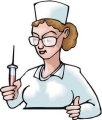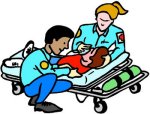
Worksheets and No Prep Teaching Resources
Reading Comprehension Worksheets
Health Professionals

Health Professionals
 Worksheets and No Prep Teaching Resources Reading Comprehension Worksheets Health Professionals |
 Health Professionals |
| edHelper's suggested reading level: | grades 4 to 6 | |
| Flesch-Kincaid grade level: | 7.98 |
|
Paramedics
By Jennifer Kenny |

|
 1 Alexis and her daughter were driving on the parkway. Suddenly, the car behind them crashed into their car. Alexis was knocked unconscious. Another driver dialed 911 for help. Who were the first medical responders to the scene? Paramedics were.
1 Alexis and her daughter were driving on the parkway. Suddenly, the car behind them crashed into their car. Alexis was knocked unconscious. Another driver dialed 911 for help. Who were the first medical responders to the scene? Paramedics were. |
Create Weekly Reading Books
Prepare for an entire week at once! |
| Leave your feedback on Paramedics (use this link if you found an error in the story) |
 |
Health Professionals
|